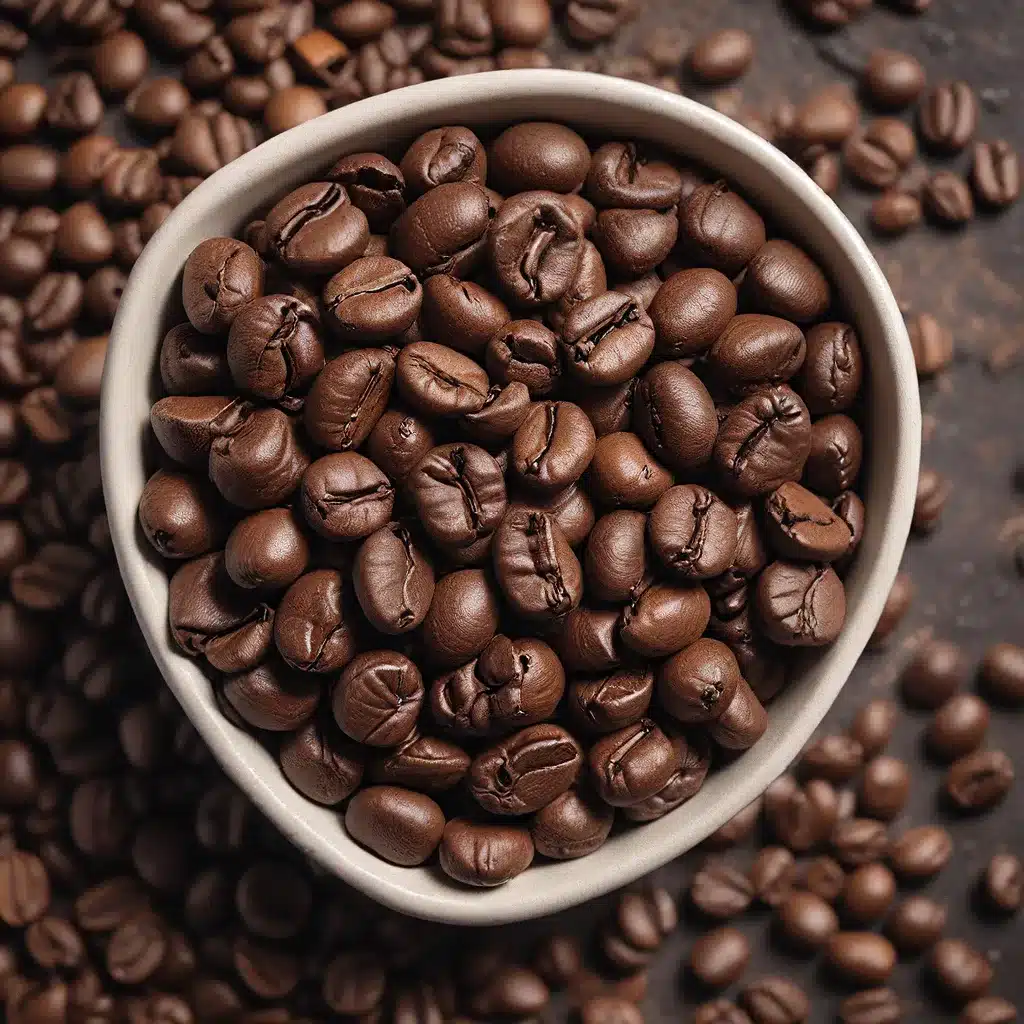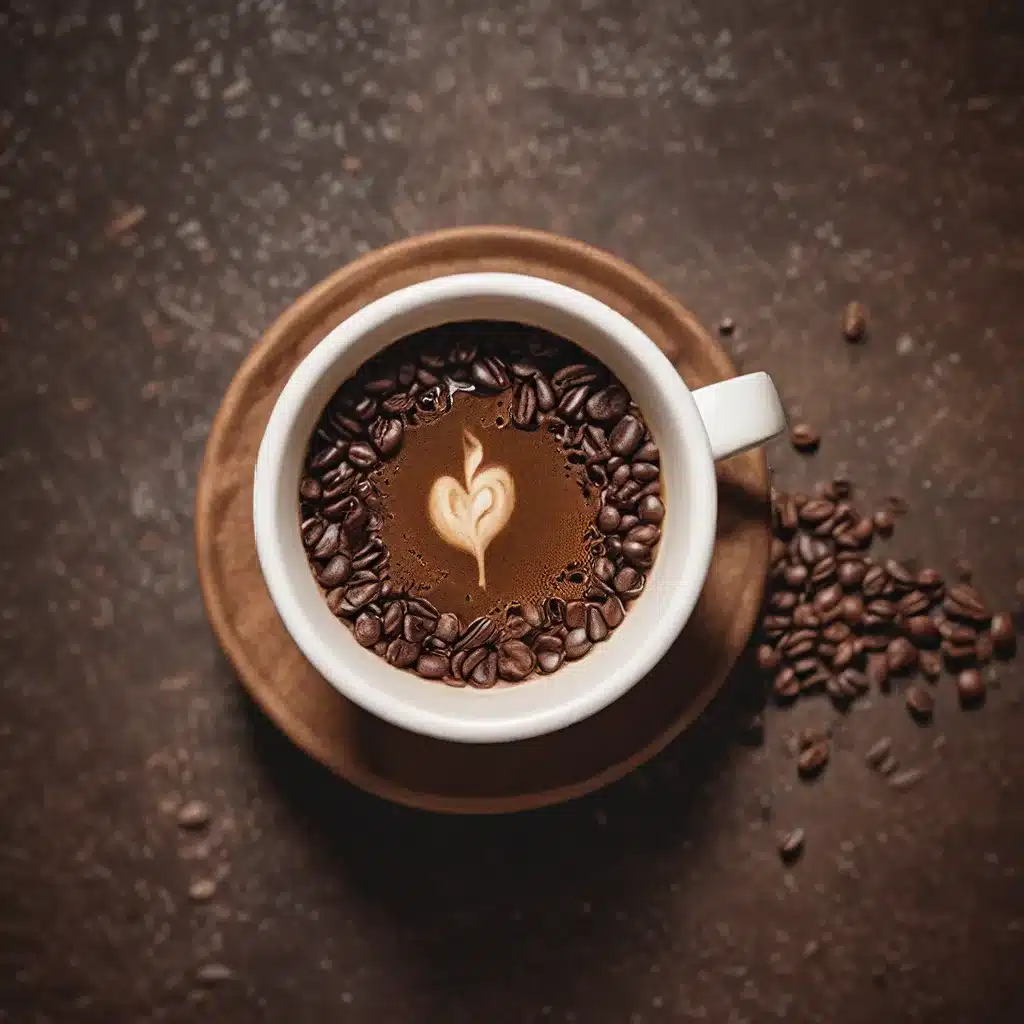
As a self-proclaimed coffee aficionado, I’ve always been fascinated by the intricate science behind brewing the perfect cup of java. It’s an art form that requires precision, patience, and a deep understanding of the complex chemical reactions at play. And when it comes to achieving that elusive, coffee bloom, I’ve found that the key lies in mastering the delicate balance between temperature, timing, and technique.
Unlocking the Secrets of the Bloom
The coffee bloom is a crucial step in the brewing process that often gets overlooked. It’s that mesmerizing moment when you pour hot water over freshly ground beans, and they suddenly burst forth in a magnificent display of carbonation. But this seemingly simple step is actually a crucial part of the extraction process, as it helps to release the trapped carbon dioxide and ensure that the water fully saturates the grounds.
You see, when coffee beans are roasted, they undergo a chemical transformation that results in the production of carbon dioxide. This gas is stored within the bean’s cellular structure, and it’s only during the bloom that it’s able to escape. If you were to simply pour water over the grounds without this crucial step, the carbon dioxide would interfere with the water’s ability to extract the flavorful compounds from the beans.
Mastering the Perfect Bloom
Achieving the perfect bloom is all about finding the right balance between time and temperature. I’ve found that starting with water that’s around 205-210°F is the sweet spot, as it’s hot enough to kickstart the extraction process without burning the delicate flavors. And when it comes to the bloom itself, I like to give the grounds about 30-60 seconds to do their thing before moving on to the next step.
As the folks at Serious Eats explain, “When you hit the coffee grounds with hot water, CO2 is able to escape and it bubbles out. The problem is that if carbon dioxide gas is going out, water isn’t able to get in. Picture shoppers on Black Friday – if you opened the store for business at the same moment there was a panicky fire drill, you could have a mess on your hands. That is, unless everyone wanting in waited until everyone wanting out got out.”
By allowing that initial bloom to happen, you’re essentially creating a smooth, uninterrupted path for the water to work its magic. And trust me, the difference in the final cup is like night and day. I’ve found that a properly bloomed brew is significantly sweeter, more balanced, and brighter than one that’s rushed through that crucial first step.
The Science Behind the Bloom
But what exactly is happening during that bloom phase, you ask? Well, it all comes down to a delicate dance between wetting, dissolution, and diffusion – the three key stages of the coffee extraction process.
Wetting is the initial phase where the dry, CO2-laden grounds are hit with hot water. As the gas escapes, it creates a sort of “traffic jam” that needs to be cleared before the water can fully penetrate the grounds. The bloom allows this gas to dissipate, ensuring the water can reach the innermost parts of each particle.
Next comes dissolution, where the hot water begins to dissolve the various organic compounds within the coffee. Interestingly, the desirable, flavor-packed solubles actually dissolve more readily than the unpleasant, bitter compounds. So by stopping the brewing at the perfect moment, you can maximize the extraction of the good stuff while minimizing the extraction of the bad.
Finally, diffusion takes over, transporting those dissolved compounds out of the grounds and into your cup. This process is driven by osmosis, with the concentrated brewed coffee migrating out to the less concentrated surrounding water. And the more evenly you can saturate the grounds during the pour, the more efficient and balanced this diffusion will be.
Achieving Consistent, Delicious Results
Of course, mastering the coffee bloom is just one piece of the puzzle. As any seasoned barista will tell you, there are a whole host of other variables that come into play – from grind size and water temperature to brew time and agitation. But once you’ve got that bloom dialed in, you’ll be well on your way to crafting consistently delicious cups of coffee.
And that’s where the real fun begins. Because as I’ve discovered through countless hours of experimentation, there’s always more to learn and explore when it comes to the art of coffee brewing. Whether it’s testing out new bean varieties, playing with alternative brewing methods, or delving deeper into the underlying science, there’s always another rabbit hole to go down.
Continuous Improvement and Exploration
Just take my own journey, for example. As I shared on the r/Coffee subreddit, I spent years grinding my beans too coarsely, thinking I had it all figured out. It wasn’t until I really started to pay attention to the nuances of my pouring technique – things like flow rate and height – that I was able to unlock a whole new level of flavor and extraction.
And the best part? I’m still learning and evolving every single day. Just this morning, I tried an even finer grind on my Baratza Virtuoso, convinced that it would result in an overextracted, clogged mess. But to my surprise, the brew was brighter, sweeter, and more intense than anything I’d ever tasted before. It was a humbling reminder that there’s always more to discover, and that the pursuit of coffee perfection is an endless, ever-changing journey.
So if you’re like me, and you’re always seeking to push the boundaries of what’s possible with your daily cup of joe, I encourage you to dive headfirst into the world of coffee science. Experiment with different variables, read up on the latest research, and don’t be afraid to challenge your own assumptions. Because who knows – maybe your next breakthrough is just a bloom away.














